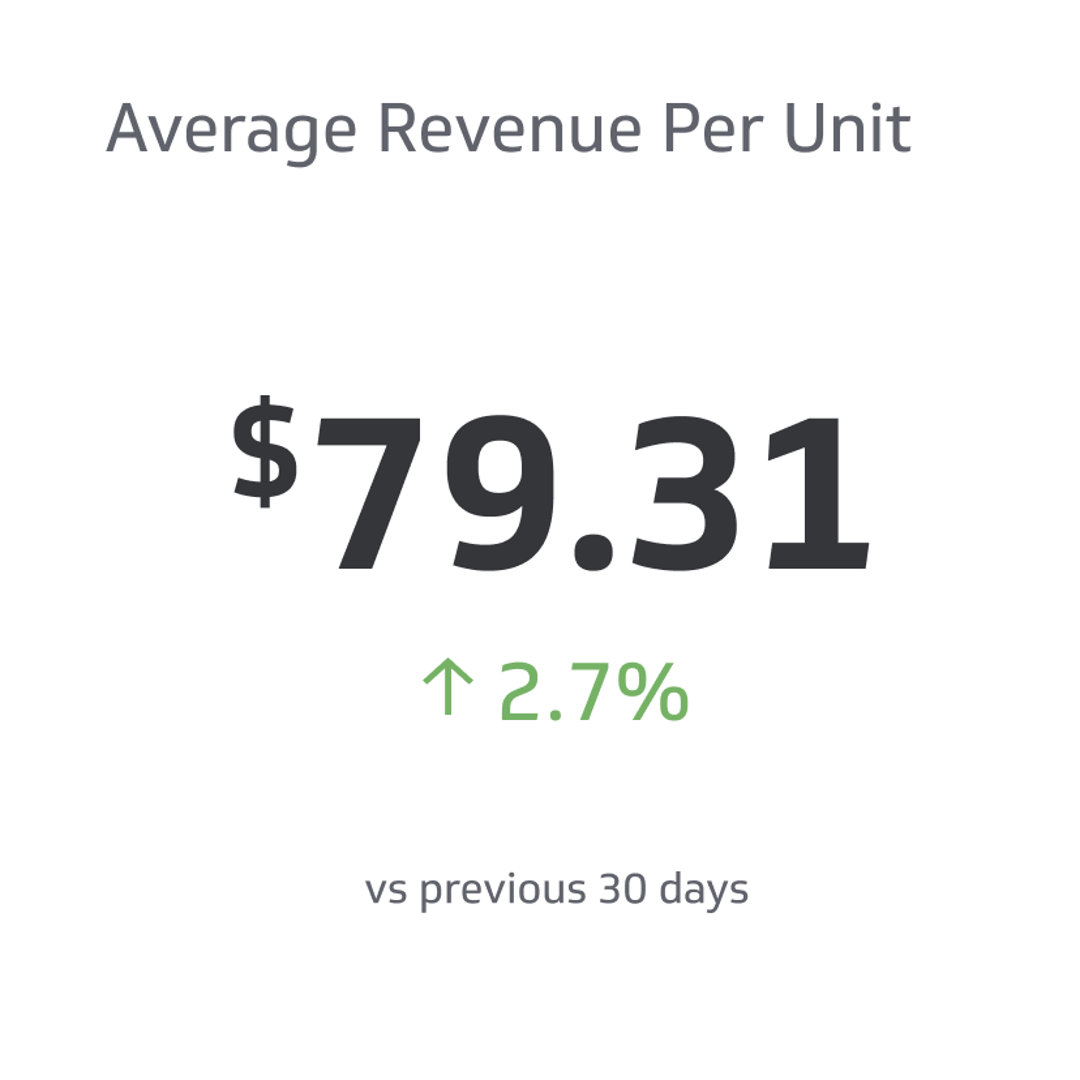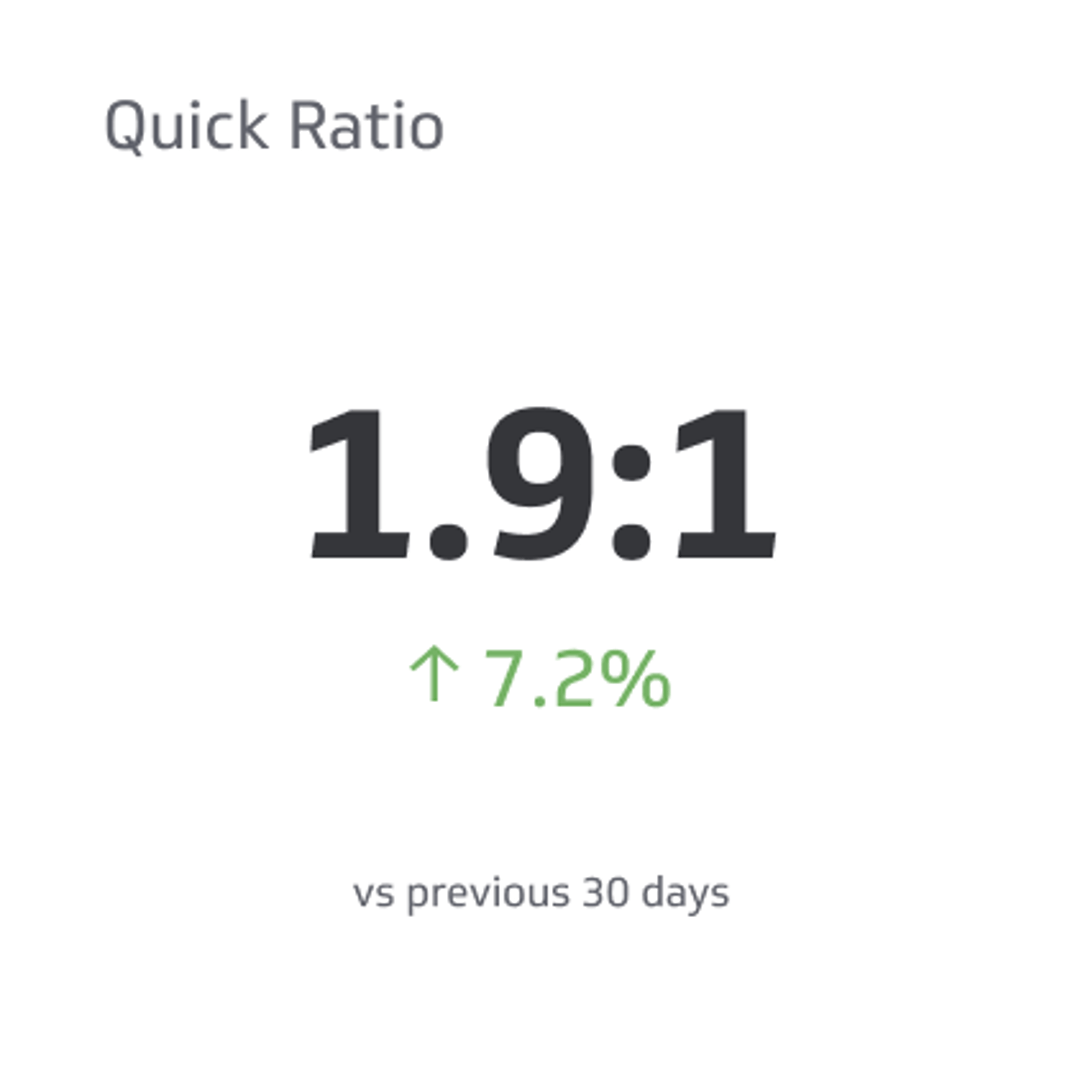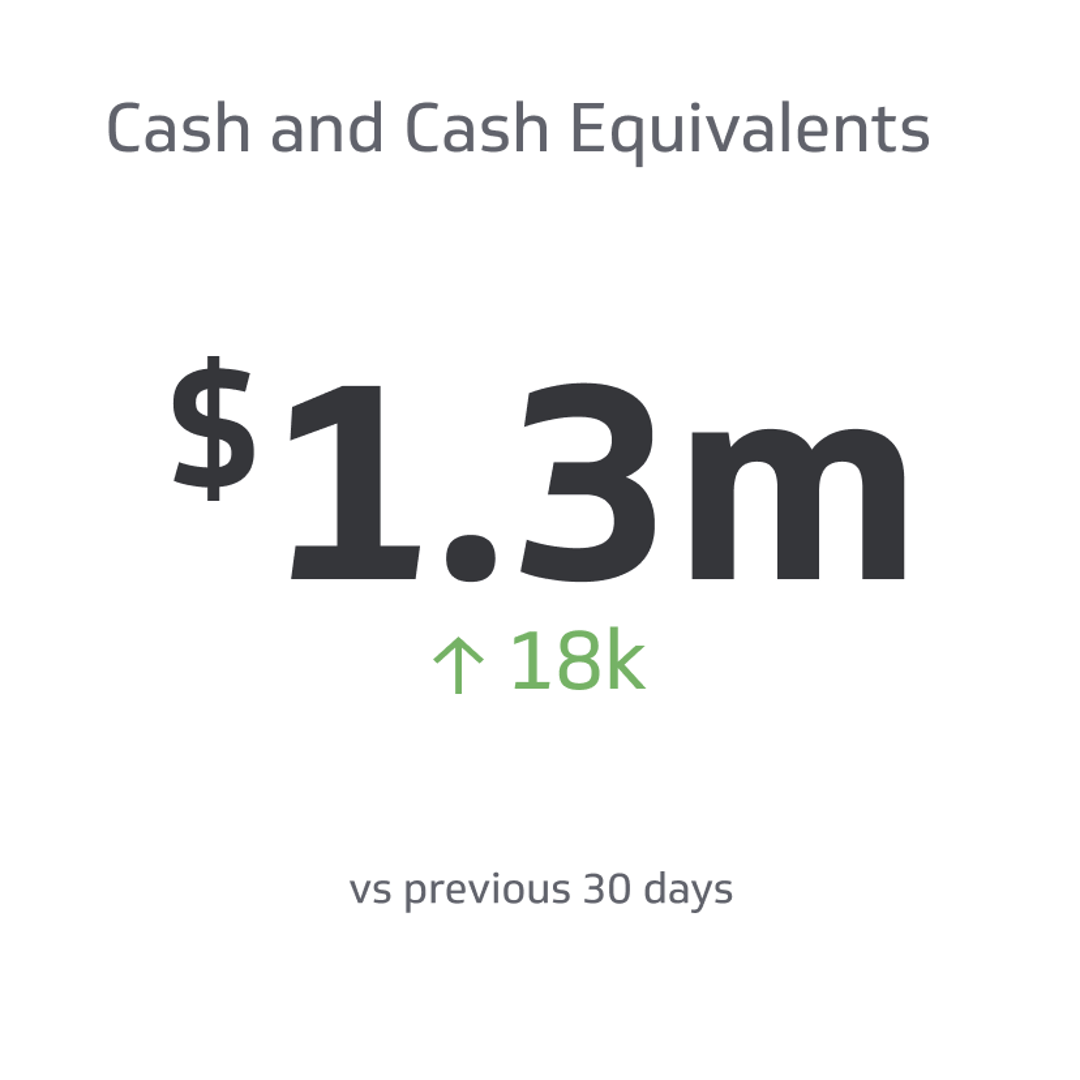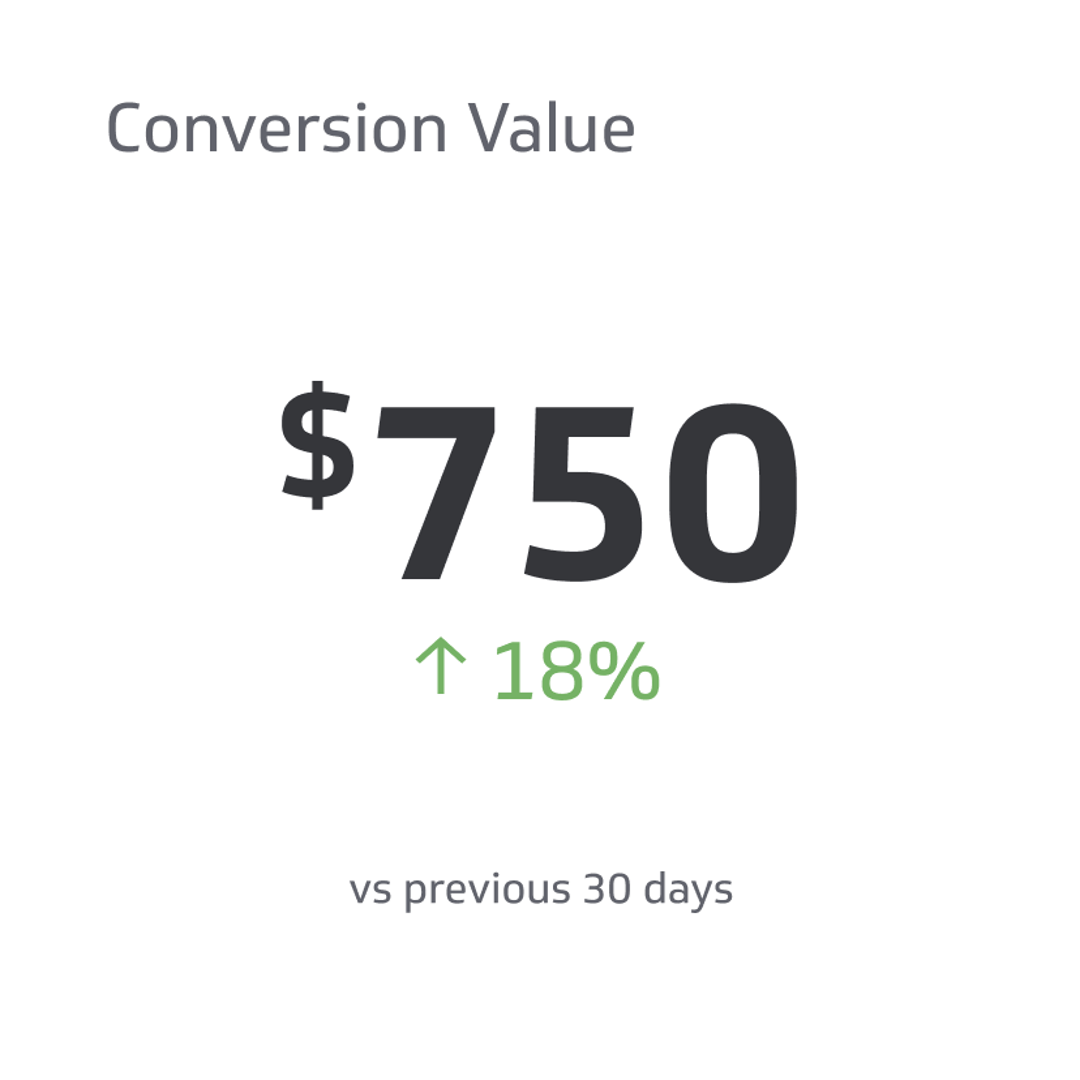Average Revenue Per User (ARPU)
Track all your Financial KPIs in one place
Sign up for free and start making decisions for your business with confidence.

Understanding and optimizing revenue generation is crucial for success in today's competitive business landscape. One key metric that plays a vital role in this process is the Average Revenue Per User (ARPU), which measures the revenue generated by each user over a given time.
This insightful metric helps businesses make data-driven decisions, understand customer behavior trends, and identify growth opportunities.
Understanding Average Revenue Per User (ARPU)
To understand the significance of Average Revenue Per User (ARPU), defining and calculating this number helps users determine a product's profitability.
Definition and Importance Of ARPU In Business
Average Revenue Per User (ARPU) is a vital financial metric that calculates the revenue generated by each user, on average, over a specified period.
ARPU helps businesses gain insights into their revenue streams and identify patterns in customer behavior.
The importance of ARPU in business cannot be overstated – it serves as a benchmark for tracking performance and growth over time. By analyzing this metric, companies can pinpoint strengths and weaknesses in their pricing strategies, marketing campaigns, product offerings, and overall user engagement levels.
Calculation Of ARPU
To compute ARPU, divide the total revenue generated during a specific period by the number of users or subscribers in that same timeframe.
For example, a revenue of $10,000 divided by 2,000 users results in an ARPU of $5.
By regularly monitoring and analyzing ARPU trends, businesses can gain insights into user engagement patterns and identify growth opportunities. It helps companies understand how effective their sales efforts are at increasing average spending per customer while also allowing them to make data-driven decisions for pricing strategies and product offerings to improve overall business performance metrics.
Significance of ARPU as a Metric
ARPU is an essential metric for businesses that want to make data-driven decisions, gain insight into customer behavior, and identify growth opportunities, all of which can impact revenue optimization strategies.
Facilitating Data-Driven Decision-Making
In today's competitive business landscape, making informed decisions based on accurate data is crucial for success. ARPU facilitates data-driven decision-making processes. Data shows that organizations following a data-driven model are three times more likely to see an increase in revenue.
For example, a business may discover through ARPU analysis that users are more likely to purchase premium features or add-ons after three months of using their service. As a result, the company would develop targeted marketing campaigns and promotional offers catering to customers approaching the end of that time frame.
This data helps businesses stay relevant and paves the way for strategizing future growth prospects with critical insights into consumer behavior from this key performance indicator (KPI).
Providing Insights On Customer Behavior
One of the significant benefits of ARPU is that it provides insights into customer behavior. By calculating ARPU, businesses can analyze patterns and trends in customer spending habits over time.
Additionally, understanding ARPU helps businesses develop targeted marketing campaigns that resonate with their audience's interests and preferences. With data-driven insights into consumer behaviors and desires, companies can tailor their messaging to encourage higher levels of engagement and promote additional revenue streams.
Identifying Opportunities For Growth
ARPU is a powerful metric that can help businesses identify growth opportunities. By analyzing ARPU, companies can gain insights into customer behavior and preferences, which can inform decisions about pricing strategy, marketing efforts, and product offerings.
ARPU is also useful in identifying gaps in revenue generation across different segments of a business' audience. Suppose certain groups of users have significantly lower average revenue per user compared to others. In that case, this may suggest an opportunity for targeted marketing campaigns to boost sales from those segments.
Factors Affecting ARPU
Several factors can impact ARPU, including pricing strategy and customer retention, marketing and sales efforts, and product offerings. Understanding these factors is critical to optimizing revenue generation for your business.
Pricing Strategy and Customer Retention
Pricing strategy and customer retention play a critical role in determining ARPU. Pricing can either improve or hurt customer acquisition, engagement, and sales revenue and ultimately affect the company's overall revenue growth.
When developing pricing strategies to optimize ARPU, it is essential to understand customers' willingness to pay for a specific product or service and their purchasing behavior.
Effective pricing strategies require understanding your audience segments and tailoring prices according to demographics, spending habits, and past purchase history.
Customer retention is equally important in improving ARPU by increasing the lifetime value of each user and the revenue the customer will generate.
Marketing and Sales Efforts
Marketing and sales efforts are vital in determining a business's ARPU. The better a company's marketing and sales teams are at attracting new users, retaining existing ones, and upselling to them, the higher their ARPU will be.
Effective marketing campaigns that generate leads and convert them into paying customers can significantly increase revenue per user.
Moreover, businesses must also focus on retention strategies beyond just acquisition efforts. They are retaining customers through targeted email campaigns and special promotions tailored to individual preferences resulting in increased customer loyalty and higher average order value (AOV).
Better AOV means more revenue generated from each customer, translating to an elevated ARPU for the business.
Product Offerings
The products or services of a business play a significant role in determining the ARPU. The more value a product or service provides customers, the higher their willingness to spend.
For example, premium offerings such as add-on features or personalized experiences can increase ARPU. "You might also like" suggestions help companies sell a range of products while increasing revenue from a single sale.
Subscription models also provide an excellent opportunity for revenue optimization by delivering consistent and predictable sales revenue. For example, suppose a customer decides to purchase a monthly magazine subscription instead of a standalone purchase for one month. In that case, the company guarantees sales for 12 months instead of one.
No longer just for magazines and newspapers, the worldwide subscription market grew from almost $73 billion in 2021 to $120 billion in 2022, with a predicted growth of over $900 billion by 2026, including boxes for meals, beauty products, clothes, and more.
Furthermore, businesses with diverse product portfolios have multiple opportunities for upselling and cross-selling, which can boost customer revenue and improve retention rates.
Comparison of ARPU With Other Metrics
ARPU is not the only metric used to measure the financial health of a business; comparing it with other metrics such as Customer Acquisition Cost (CAC), Lifetime Value of Customer (LTV), and Gross Profit Margin can help businesses gain a better understanding of their revenue generation and identify which areas require improvement.
Customer Acquisition Cost (CAC)
Customer Acquisition Cost (CAC) is a metric business uses to determine the money spent on acquiring new customers. This metric considers all expenses incurred in sales and marketing efforts, including advertising, promotions, and product trials.
A high CAC means that the business needs to invest more resources to acquire its desired number of customers.
For instance, if Company A spends $10,000 in marketing campaigns and acquires 100 new customers during a specific period of time, then its CAC would be $100 per customer.
Understanding this metric is crucial for businesses as it helps them identify inefficiencies in their strategies and optimize them accordingly.
Lifetime Value of Customer (LTV)
Another important metric for businesses to consider alongside ARPU is the Lifetime Value of the Customer (LTV). LTV refers to the total revenue a customer will generate over their lifetime.
Understanding LTV is crucial for businesses looking to optimize their revenue and improve profitability.
For example, if a company sells monthly subscription boxes for $50 per box. If the average subscriber stays subscribed for 12 months, the LTV would be $600 per customer ($50 x 12).
This information can help the company determine if they need to focus on acquiring or retaining new customers.
Gross Profit Margin
Gross Profit Margin is an important metric that measures the profitability of a company's sales after accounting for the cost of goods sold. It is calculated by subtracting the cost of goods sold from total revenue and dividing it by total revenue.
A high gross profit margin shows that a company is generating enough revenue to cover its operating costs while also earning profits.
For instance, if your business has a gross profit margin of 60%, it means that for every $1 in sales revenue generated, $0.40 goes towards covering overhead costs such as salaries, marketing expenses, or rent, while $0.60 remains as gross profit for further investment in growing your business.
Knowing your Gross Profit Margin can provide insights into your products and services profitability and identify areas where adjustments can be made to increase profits per customer or for more lucrative product offerings.
Strategies To Improve ARPU
There are several strategies that businesses can implement to improve their ARPU, including:
- Upselling and cross-selling
- Personalization and customization
- Subscription models
- Premium features and add-ons
- Effective pricing strategies
Upselling and Cross-Selling
Another strategy for improving ARPU is through upselling and cross-selling. Upselling involves offering a higher-priced product or service with additional features or benefits to customers who have already purchased. Cross-selling involves recommending complementary products or services that can enhance the value of the customer's purchase.
Personalization and Customization
Personalization and customization are effective strategies to improve ARPU by providing a unique experience to each customer. Businesses can tailor their offerings based on the customer's preferences, interests, and behavior.
For example, an e-commerce business can recommend products related to the customer's purchase history or browsing patterns.
Subscription Models
Subscription models are becoming increasingly popular in today's digital age. By offering products or services on a subscription basis, businesses can generate consistent and predictable revenue streams while providing ongoing value to their customers.
With subscription models, businesses can use ARPU as an essential metric to track the average amount of money each subscriber generates over time. By optimizing ARPU through personalized offers, add-ons, and other incentives, companies can improve customer retention rates and drive revenue growth.
Premium Features And Add-ons
Including premium features and add-ons can significantly increase a company's ARPU. These additional offerings provide users exclusive access to advanced functionality, services, or content.
In exchange for these benefits, customers are willing to pay extra fees.
Adding premium features and add-ons allows companies to generate additional revenue while providing more value to their current customers. When executed correctly, this strategy can help businesses increase their ARPU by upping the pricing tiers or increasing the usage rates of existing subscribers.
Effective Pricing Strategies
Pricing strategy is one of the most crucial factors that can impact ARPU. Effective pricing strategies can improve ARPU and optimize overall revenue generation for businesses.
However, it's important to remember that there isn't a one-size-fits-all approach to pricing.
Conclusion
In conclusion, Average Revenue Per User (ARPU) is an essential metric for businesses to track and optimize their revenue streams. ARPU provides valuable insights into customer behavior and helps identify growth opportunities.
By using effective strategies such as upselling, personalization, and subscription models, businesses can improve their ARPU and ultimately drive revenue growth. As a non-GAAP financial metric commonly used by digital media companies, ARPU is vital in facilitating data-driven decision-making and improving key performance indicators (KPIs) such as customer lifetime value (CLV), churn rate, conversion rate, and sales pipeline.
Related Metrics & KPIs



